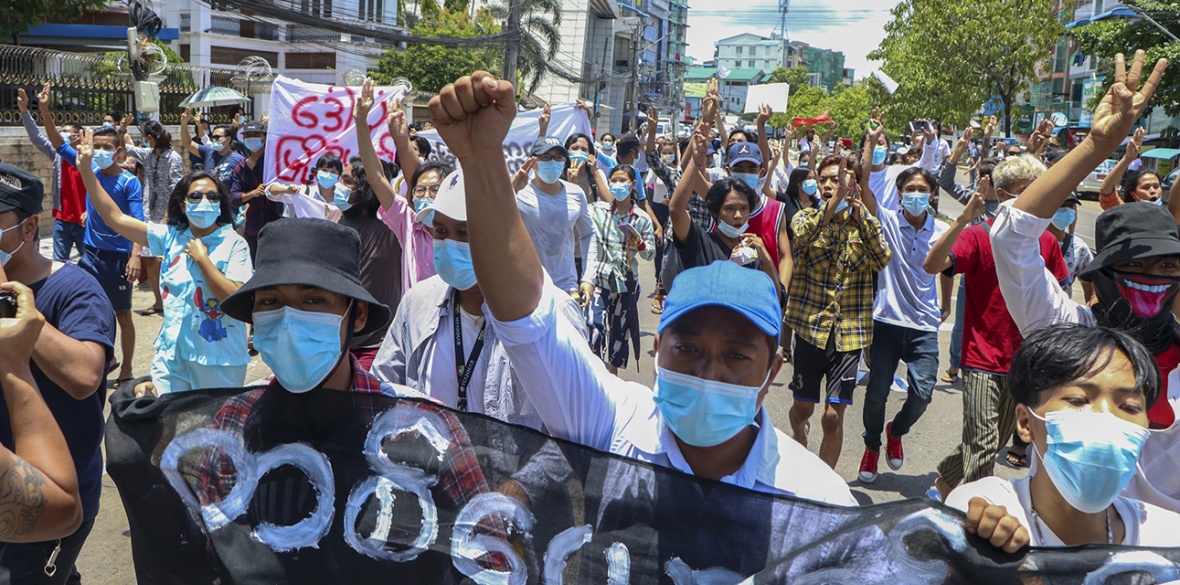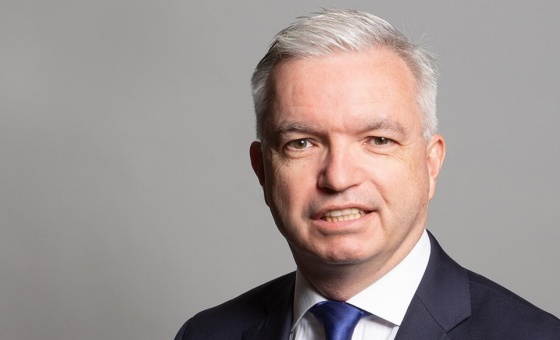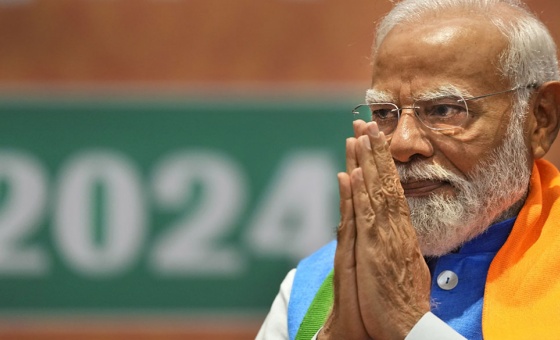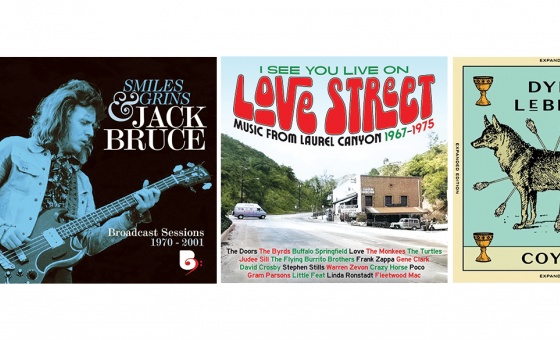This is the last article you can read this month
You can read more article this month
You can read more articles this month
Sorry your limit is up for this month
Reset on:
Please help support the Morning Star by subscribing here
MASS protests against the February military coup in Myanmar have shown the breadth of popular opposition to the junta headed by Min Aung Hlaing.
In the assessment of the illegal Communist Party of Burma (CPB), the current broad movement against the military displays many familiar features from past democratic and left movements as well as some new features.
The role of the urban working class is one such factor. Despite the numerical increase in the working class compared with the immediate post-war period, trade unions in Myanmar have often been either co-opted, marginalised or repressed.
“One of the significant features of Burma’s politics before independence was the influence of the Bolshevik Revolution in Russia and leftist movements the world over.
“So, even the ruling classes, rightists and the sworn followers of the Western powers, used left-sounding slogans to win popular support,” says a CPB spokesman.
“After gaining independence in 1948, two strong trade unions appeared in the country: one, belonging to the left and another to the ruling rightists.
“After the CPB went into the jungle to take up armed struggle, the legal trade union movement weakened visibly. The then-ruling party, the Anti-Fascist People’s Freedom League, which also talked about socialism on occasion, had its own trade unions and when the league split, its trade unions split accordingly.
“There was also a trade union under a leftist party above ground at the time. But its influence was quite minimal.
“During the rule of Ne Win’s Burmese Socialist Programme Party (BSPP) from 1962, due to the government’s misuse of socialist jargon, like ‘working people,’ ‘exploitation’, etc, ordinary people got bored with leftist slogans, so the trade union movement was largely ignored by the people as well as the government.
“The then existing unions were used instead by Ne Win and his BSPP leaders to target the national bourgeoisie, politically and economically, by detaining people and taking their properties over and putting them into the hands of the military bureaucratic bourgeoisie.”
During the late 1980s, when social discontent took on mass forms, there was a revival of the trade union movement.
“A new sort of trade unions reappeared in Burma after the 1988 movement, but they are still noticeably weak and scattered.
“Though they are not well-organised, working people have played an undeniably active role in the present nationwide upheavals.
“After the outbreak of the current turmoil, many workers have taken part in demonstrations and have been finding means to pick up arms.”
Another key force has been students, who played a significant role in the anti-colonial struggles of the 1930s and again in the 1988 revolt — sometimes called the 8888 Rising, due to it reaching its high point on August 8 1988.
“Students always play a pioneer role in Burma’s politics. The students’ unions used to have a strong influence.
“They have proved that they can pick up arms as well as posters, in accordance with the objective demands of the movements.
“Some students from the Civil Disobedience Movements (CDM) have gone to the ethnic armed base areas and have even taken part in fighting against the government troops.”
Other significant elements of the democratic mass movements have been among religious believers, intellectuals and women.
“In the present uprising, just like the 1988 uprising, people of all ethnicities, strata and religions are taking part in various ways.
“We have seen Buddhist monks, Christian nuns and Islamic preachers shouting slogans in the streets and being killed.
“They organised joint food collections for the people who are engaged in the civil disobedience movements and those on strike. Unexpectedly, many intellectuals and professionals — especially from the health services — came to the fore in the present uprising and made considerable sacrifices.
“We have seen many female martyrs of all ages appear during this uprising with many holding leading positions on many fronts. Equality is being made a reality in the nation-wide uprising,” the communist spokesman stresses.
One of the fundamental features of Myanmar is its diverse ethnic make-up, with 134 minorities officially recognised alongside the dominant Bamar or Burman ethnicity.
However, some “alien” ethnic groups were left unrecognised by a 1982 Ne Win citizenship law, due to their real or perceived origins outside the frontiers of Myanmar.
Myanmar’s military regimes have a long record of ethnic discrimination.
After the 1962 coup, around 300,000 city-dwellers of Indian origin were expelled and their property and businesses expropriated by the military regime.
Many minorities from the rural areas have also been affected by ethnic chauvinism, including the Rohingyas, a Muslim people concentrated in the state of Arakan/Rakhine on the Myanmar-Bangladeshi border and who speak a Bengali dialect.
This group has been subject to mass killings and ethnic cleansing.
The Myanmar regime maintained that the Rohingyas were merely Bengali migrants and not an indigenous constituent of the Myanmar population.
This is despite abundant proof of several hundred years of Rohingya settlement in Arakan, long pre-dating the country’s existing frontiers, as well as more recent waves of migration during the British colonial period and after.
In addition to Bamar-chauvinism, (the Bamar or Burmans being the dominant ethnic group in Myanmar) there is the additional issue of Islamophobia, playing upon fears of Islamist radicalisation among the Rohingya community.
Aung San Suu Kyi disillusioned many of her Western liberal followers when she repeated many of the military’s talking points and failed to condemn the widespread violence, mass killings and expulsions of Rohingyas.
Much of the ethnic conflict flows from the historical experience of British colonialism in south-east Asia, which grabbed disparate territories and drew administrative borders with little regard for ethnic, religious or linguistic compatibility.
From the perspective of the CPB, the Rohingya question is in a sense one remnant of Myanmar’s past.
The CPB spokesman says emphatically: “We believe any citizen has the right to claim whatever nationality he or she belongs to.”
However, he noted that Rohingya groups had also been used by the military when it suited them.
This included previous regimes encouraging Rohingya armed groups to harass units of the CPB’s People’s Army operating in Arakan during the phase of communist armed struggle in the region.
Myanmar’s military have always tried to stoke ethnic tensions in this way to maintain their rule, while maintaining a facade of nationalism.
This is why the CPB still refers to the country as Burma, a change made in 1989 after the 8888 Uprising had rocked the regime, and which was accompanied by similar changes to many city and regional names, Yangon for Rangoon, Rakhine for Arakan and so on.
As the CPB representative puts it: “Burma’s military government changed the name of the nation from Burma to Myanmar without consulting any scholar or asking the opinion of the people.
“They did it farcically to let others think that they did it out of patriotism. The military clique deliberately used this issue as a trump card to show off their ‘patriotism’ and allow them to stir up national or religious problems in the country any time they need.”











